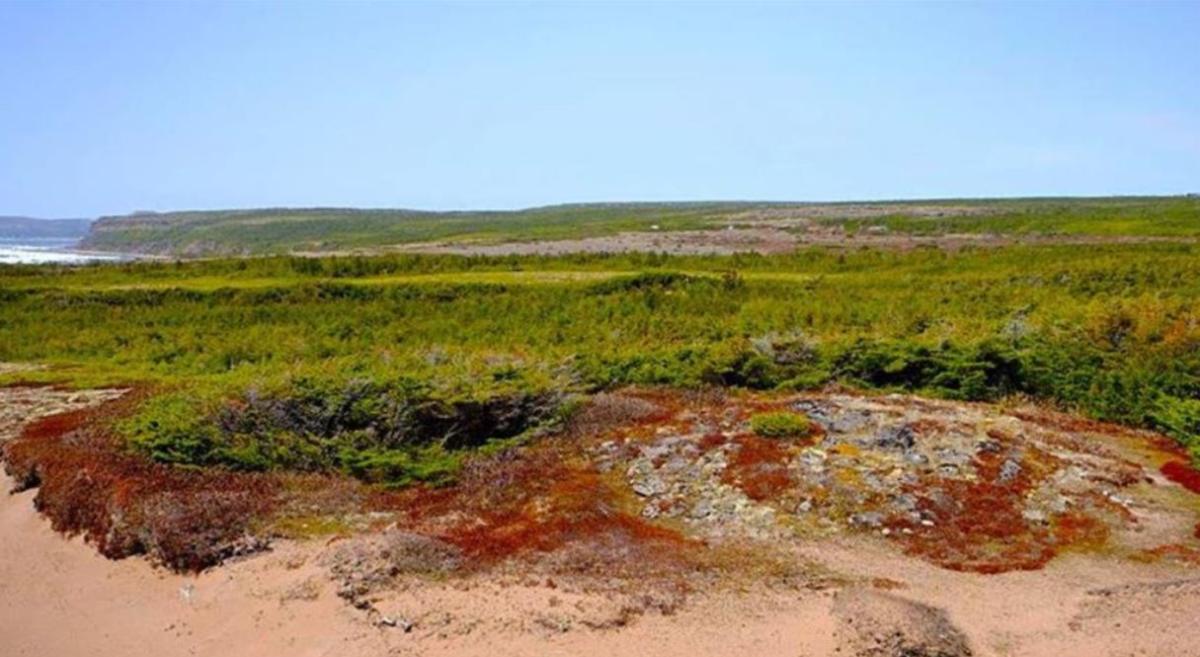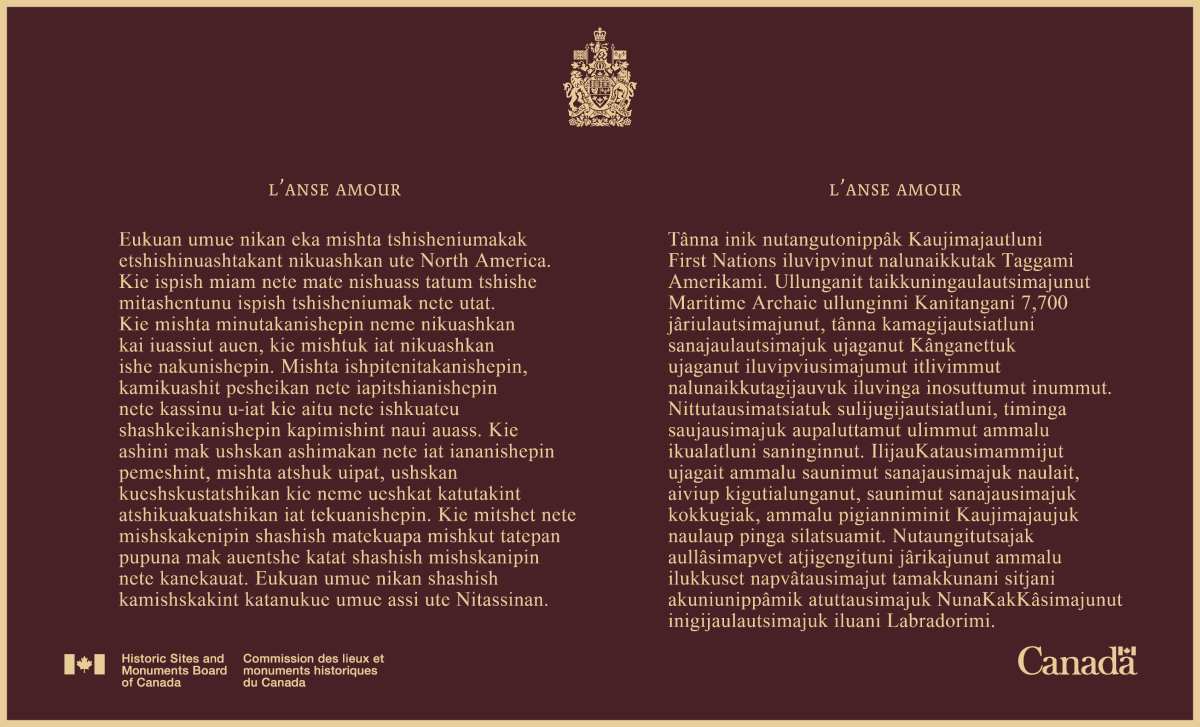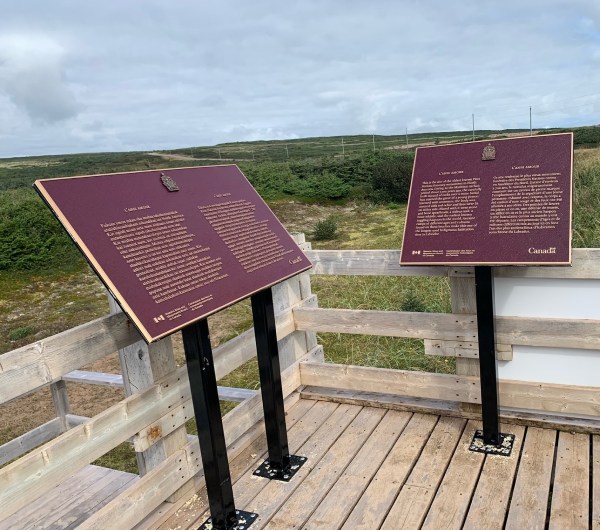L'Anse Amour National Historic Site
L'Anse Amour was designated as a national historic site in 1978.
The Historic Sites and Monuments Board of Canada reviewed this designation in 2022.
Commemorative plaque: L'Anse Amour Road, off Route 510, Labrador, Newfoundland and LabradorFootnote 1
L'Anse Amour
This is the site of the oldest known First Nations funerary monument in North America. Dating to the Maritime Archaic period about 7,700 years ago, the carefully built mound of rocks over a stone burial box marked the grave of a young person. Interred with reverence, the body was covered with red ochre and fires were lit on either side. Placed with it were stone and bone spearheads, a walrus tusk, a bone whistle, and the earliest known toggling harpoon in the world. Ancient camps of different ages and cultures found on these beaches make this one of the longest used Indigenous habitation sites in Labrador.

© Provincial Historic Sites, Department of Tourism, Culture, Arts and Recreation / Government of Newfoundland and Labrador

Reasons for designation
L’Anse Amour is one of the largest and longest used Indigenous habitation sites in Labrador, representing the remains of many small camps.
It features the oldest known First Nations funerary monument in North America created about 7,700 years before present. The significance of this young person’s burial is centred on the associated ritual and symbology identified by the purposeful mound construction over the stone burial box, the placement of the body, the use of red ochre, and the artifacts placed in the grave, which includes the earliest known toggling harpoon in the world.

© Parks Canada
Review of designation
Reviews are undertaken on an ongoing basis to ensure that designations reflect current scholarship, shifts in historical understandings, and a range of voices, perspectives and experiences in Canadian society.
In 2022, this designation was reviewed due to colonial assumptions and outdated terminology in the commemorative plaque text. The commemorative plaque text, approved in 1984, included outdated terms for Indigenous Peoples and the Euro-centric term “New World” to refer to North America. New research also provided more information on the funerary monument discussed in the plaque text.
The plaque text was modified to remove outdated terminology and now refers to First Nations and Indigenous peoples. The text was also modified based on current archaeological research to state a more precise date for the creation of the funerary monument. A new plaque was installed in 2023.
Source: Historic Sites and Monuments Board of Canada Minutes, March 2022.
The National Program of Historical Commemoration relies on the participation of Canadians in the identification of places, events and persons of national historic significance. Any member of the public can nominate a topic for consideration by the Historic Sites and Monuments Board of Canada.
- Date modified :
